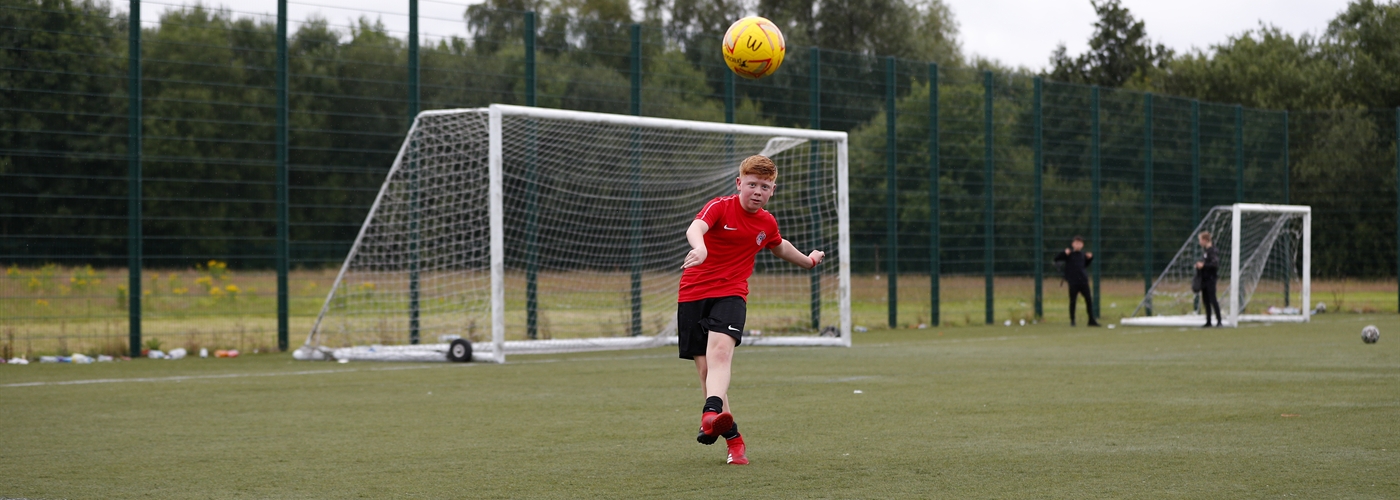In this blog, our early years specialist, Pete Sturgess discusses the importance of receiving and areas that can be developed within young players to improve this skill.
The game of football is built around effective teamwork, collaboration and cooperation so passing the ball between team members in the pursuit of a goal is an integral part of the game. However, if this is what we are aiming for, what are the steps we should take to achieve this with our youngest players and are there some things that we need to consider along the way?
Seeing the ball passed quickly, accurately and with purpose is a joy to behold and when done well is a thing of beauty. As coaches, we will obviously try to get our teams to play in this way but if your team is aged between 5-11 is this the best course of action? Is there a greater benefit to prioritising other things? Could you actually go away from sharing the ball, so that in the long term our team will become even better at passing and receiving the ball?
Football is a game that consists of many interconnected parts. Twenty two players all moving, thinking and acting as individuals as well as playing together means that the possibilities are almost endless. The unpredictability and dynamic nature of the game means that information that is taken from the immediate surroundings informs what the next actions and decisions might be. When we see the levels of teamwork and cooperation at the highest levels of the game it belies the complexity that the players are making sense of. In terms of our youngest players, it becomes even harder – let’s have a look at what extra challenges our youngest players might face.
Scanning has emerged as a key skill for anyone playing invasion games. As such, visual stimuli and the other senses: hearing, smell, taste and touch, provide a rich source of information to inform what might happen next. But what if these abilities are not yet fully developed and what, if because of this, our ability to pass, receive and move like the adult footballers is compromised?
There are two main types of visual stimuli that guide action: static ones (e.g. objects to be grasped, obstacles to be avoided) and moving ones (e.g. moving objects and that includes “things’ like a ball as well as other people and animals). If we want our young players to search the environment more effectively, should we begin by asking them to focus on static objects first? This might be in the form of always knowing where the touchline is to avoid running out of play. Or should we work on the scanning of players who don’t have the ball first and progress to helping those who want the ball or who are already on the ball?
To do this, a coach might begin by saying:
“Put yourself into a position so that you can see a forward pass to one of your players BEFORE you get on the ball?” Attention is not split now between what the player is looking at, moving their body in a particular way AND trying to control a moving ball.
Or
“When you see an opponent ready to pass the ball, what things would help you identify whether you could intercept this pass?” Again, a clear focus for the player’s visual search behaviour.
On a more individual level, it might be directing the young player’s attention to certain areas or body parts when involved in a 1v1 or other small number situations.
Perceptual motor skills connect a child’s perceptual or sensory skills (the brain) to their motor skills (the body) so that they can perform a variety of movements and confidently interact with their environment (the game of football). Developing these perceptual-motor skills involves teaching children movements related to TIME (moving fast, slow), DIRECTION (forwards, backward, to the side) and SPATIAL AWARENESS (understanding your location and the location of others around you).
In terms of passing and receiving the ball to replicate the adult version of the game, we must understand that these young players are still developing some of the important skills to be able to do this effectively. By prioritising a more individualised approach to each player’s skill development we might actually be helping them to be better at sharing.
Encouraging players to “stay on the ball” will give them a clear focus and provide the millions and millions of touches that are needed to develop an unbreakable connection with the ball. As this connection becomes stronger and the senses develop a real touch and feel for the ball, attention can then be given to other things. These things might be all the other moving parts that make up the game of football. Position of teammates, the position of opponents and how these are all constantly changing and impacting upon the time and space available to carry out the next action or decision.
What do you do with your players to help them with their receiving skills? Do you have any questions for Pete? Please comment below.


